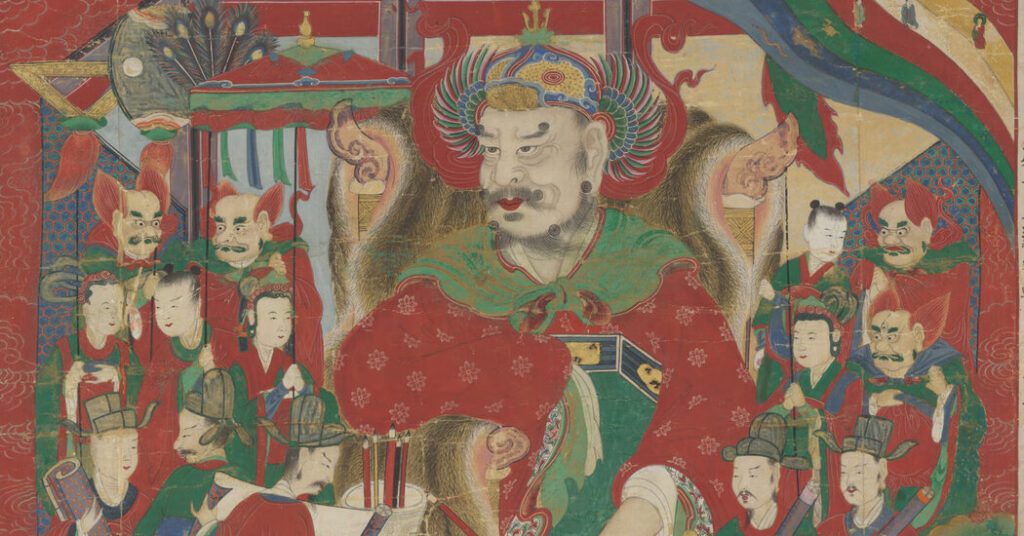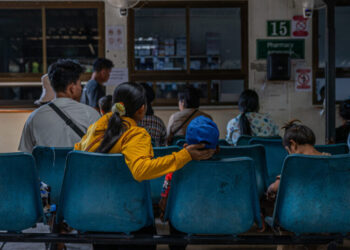The Metropolitan Museum of Art announced on Friday that it had returned a 227-year-old Buddhist painting to a temple in South Korea, where, officials said, it was believed to have been taken while it was under the control of the U.S. Army during the Korean War.
The painting, “The Tenth King of Hell,” is one of ten scrolls that were removed from Sinheungsa Temple in the city of Sokcho, in northeastern South Korea and roughly 30 miles from the North Korean border.
Its repatriation, which was marked with a ceremony in Seoul, comes more than seven decades after the Korean War ended in 1953. A news release from the Met said the return had resulted from an investigation by the museum, representatives from the temple and what is known as the Sokcho Committee for the Return of Cultural Heritage, a South Korean activist group.
Max Hollein, the Met’s director and chief executive, said in a news release that the museum had been honored to partner with the committee and the temple to return “The Tenth King of Hell.”
“The Met has a long history of working with colleagues and institutions in Korea, and we look forward to continuing our collaborative efforts to enhance the world’s understanding and appreciation of the arts of Korea,” he said.
The Met purchased the work in 2007, and it was shown in Korean art exhibitions at the museum in 2008 and 2012. According to the museum’s website, the Met bought the painting from a collector in Los Angeles through the art dealer Michael C. Hughes. How the collector had acquired the painting was not clear.
In Buddhist traditions, the Ten Kings of Hell judge the deceased to determine their fate. At the center of the returned painting sits the Tenth King, surrounded by attendants and other figures from the underworld. The dead, receiving punishments for their transgressions, fill the work’s bottom half. An inscription written in hanja, the traditional Chinese characters used for writing in Korean, reads “The Tenth Great King of the Five Ways and the Right Law, in the darkest hell, painted in the cyclical year muo,” a time that corresponds to the year 1798.
When exactly “The Tenth King of Hell” was removed from the temple was unclear. Met Museum officials said only that it had been taken “during the Korean War.” In 2020, when the Los Angeles County Museum of Art, returned six of the temple’s 10 scrolls, which it had acquired in the 1990s, it said that a photograph of the temple taken by a U.S. Army photographer in early 1954, after the war had officially ended but when the Army controlled the area, showed the paintings intact. By the time that a U.S. Marine officer took a second photo several months later, the paintings had gone missing.
The Met’s return of its painting means that seven of the ten scrolls are now back in South Korea. It is not clear where the remaining three paintings are.
Sunglim Kim, an associate professor at Dartmouth College and an expert in Korean art and cultural history, said that during the Korean War, temples, cultural sites and even private homes were frequently damaged, evacuated or taken over for military use.
“In numerous documented cases, items brought to the United States by soldiers were not part of any official directive,” she said. “They were often taken because they appeared to be left behind in destroyed or deserted buildings.”
Dr. Kim said that recognizing this context was not about assigning blame but about acknowledging that such items were part of a “distinct category of cultural loss.”
Jinyoung Jin, the author of “Art, War, and Exile in Modern Korea,” said the painting’s return was significant because it acknowledged how vulnerable cultural heritage could become during armed conflict.
Repatriations of works like “The Tenth King of Hell,” Dr. Jin said, “encourage institutions to confront the deeper histories of war, occupation and displacement that still shape how Korean art is understood and cared for.”
In 2023, facing scrutiny from academics, law enforcement and other entities, the Met began an effort to review its collection and work toward returning items it found to have problematic histories. The next year, the museum appointed Lucian Simmons, a former Sotheby’s executive, to a newly created position of head of provenance research.
Derrick Bryson Taylor is a Times reporter covering breaking news in culture and the arts.
The post Met Returns Buddhist Painting Thought Taken During the Korean War appeared first on New York Times.




